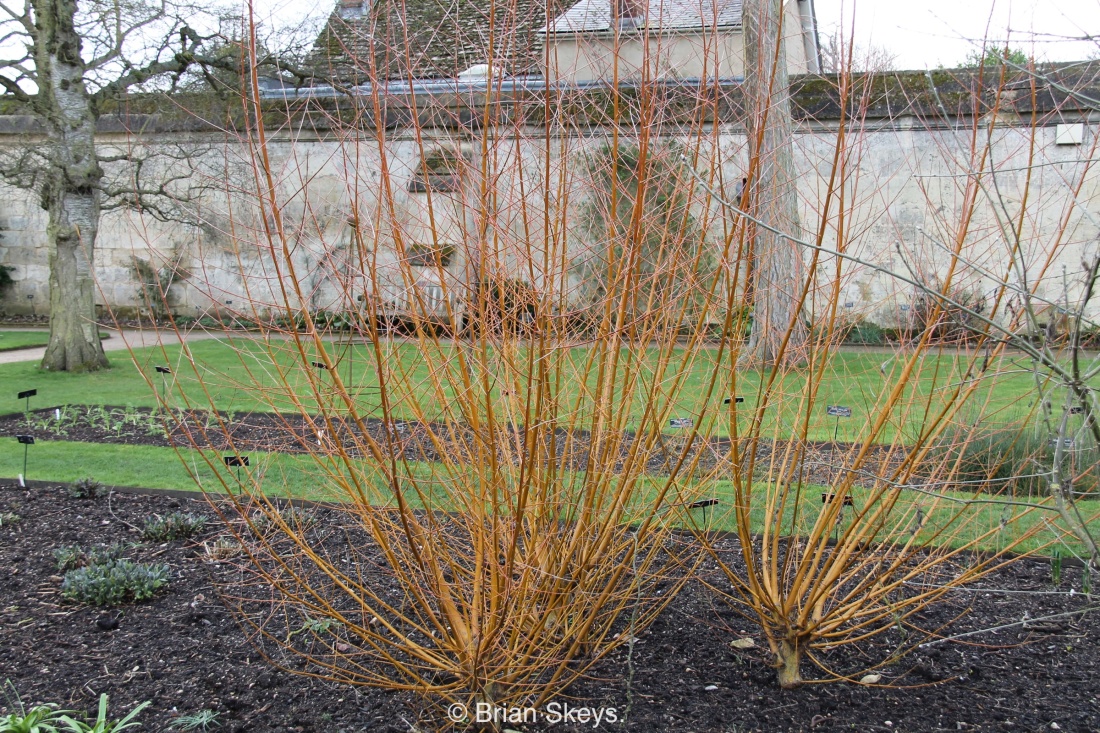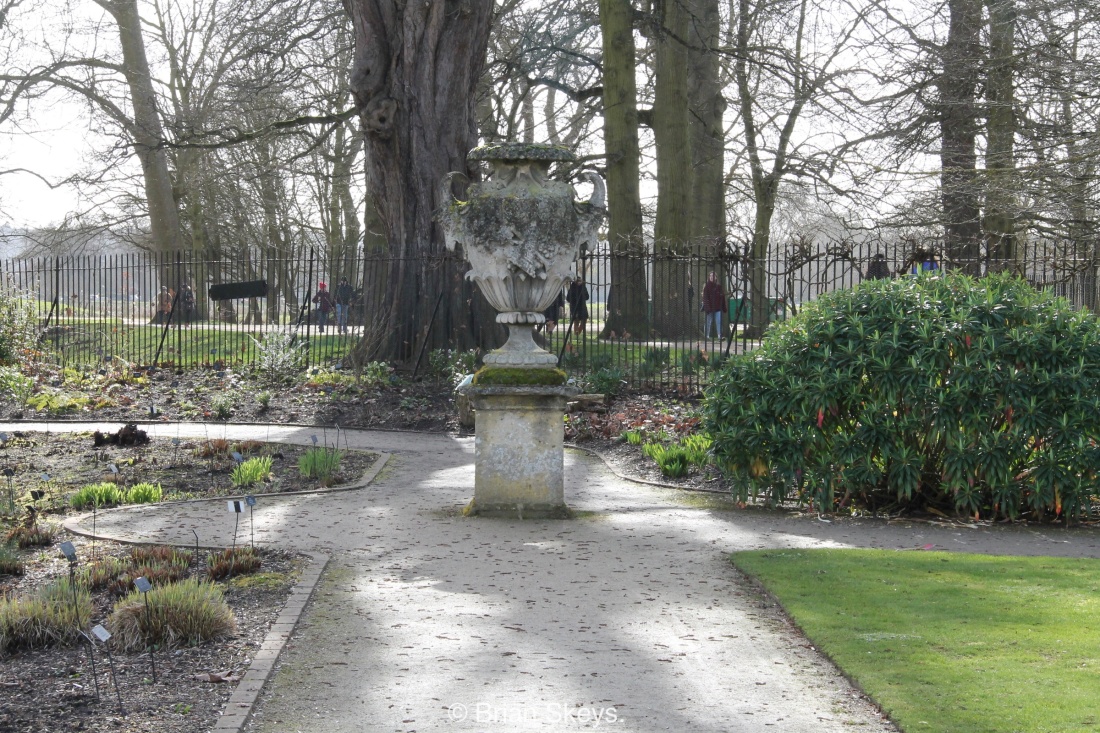Today (Friday) was the first day of sunshine here and after too many days of rain, it does bring a song into your heart.
I ventured out into the garden to finish pruning the climbing roses, before I began, I decided to do a tour with the camera. The gardener’s friend, was as usual, keeping an eye on me while providing his own welcome tune.

The Mohonia in full flower, with the sunshine, brought the honey bees out from their hives.


They were also visiting the Clematis which scrambles all over it.

The Flowers and the Trees.
By the front door there are pots planted up for a seasonal display with Carex, Ferns, Cornus stolonifera ‘Flaviramea’, Erica x darleyensis ‘Phoebe’, Thuja ‘Goldy and the…
…Snowdrop elwesii…

…and a hellebore.

Another pot contains the Sarcococca ‘Winter Gem’.

On the other side of the door an Euonymus is trained against the wall with Sarcococca confusa in front…

…the powerful scent from the Sacococca ( Christmas Box) fills the house every time the door is opened.

In the Oriental garden the Hamamelis is in full flower, I have mentioned before I would not recommend this variety, because it holds on to its dead leaves. I removed them all before taking this picture.

The sunshine was highlighting the Erica ‘Albert’s Gold’ by the entrance to the White and Green garden and the standard variegated Holly, Ilex ‘Argentea Margenata’ at the back.

Around the Holly are planters with variegated Myrtle, Tulips just starting to show and Vinca minor ‘Alba’

The snowdrops are beginning to open around the garden, especially where the sun reaches…

…the common double, which was given to me by a friend, are clumping up well, ready to divide later on…

…as is the winter aconite, although more slowly.

The Prunus Serrula always looks wonderful with the sunlight on its bark, its mug decorations ( Mug Tree) have so far survived the winter.

Around its roots is a Skimmia and variegated Ivy. Many gardeners fear ivy in the garden, I like to see it, the variegated forms are not so vigorous, while providing some colour to lighten a dark area of the garden along with being good for wildlife.

It is easy to ignore plants such as Skimmia when everything else is in full flower, however at this time of year they make a welcome contribution to the garden and this one below is a little more unusual than most.

The House Sparrows are gathering in the top of a Viburnum before diving down on to the ground feeders.

What ‘Birds and Bees, Flowers and Trees’ are making you sing in your garden?






 Growing on the bank is this lovely multi stemed silver birch.
Growing on the bank is this lovely multi stemed silver birch.
 Almost everything growing here is classified whether it be by botanical family, geographical origin or by its use. The family borders are planted to demonstrate which plants are related to each other. This Salix ‘Britzensis’ is in one of those borders, we have this willow in our garden. It has also been planted along side the river at Upton upon Severn a town close to us, in the Mathew Wilson designed borders. It looks particularly good alongside a pool, reflecting in the water, providing brilliant winter colour, hence its name.
Almost everything growing here is classified whether it be by botanical family, geographical origin or by its use. The family borders are planted to demonstrate which plants are related to each other. This Salix ‘Britzensis’ is in one of those borders, we have this willow in our garden. It has also been planted along side the river at Upton upon Severn a town close to us, in the Mathew Wilson designed borders. It looks particularly good alongside a pool, reflecting in the water, providing brilliant winter colour, hence its name.






 This is a tropical water lily, its date of origin is prior to 1856. It is described as highly viviparous, in that its seeds begin to develop before they detach from the plant.
This is a tropical water lily, its date of origin is prior to 1856. It is described as highly viviparous, in that its seeds begin to develop before they detach from the plant.





